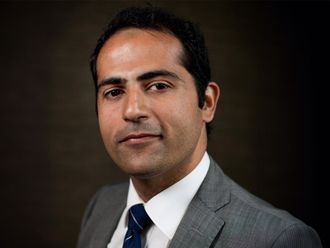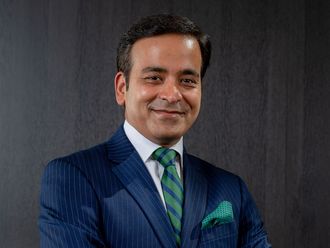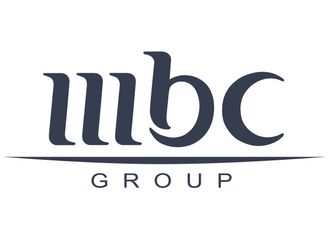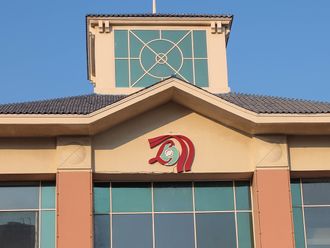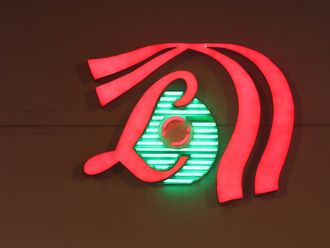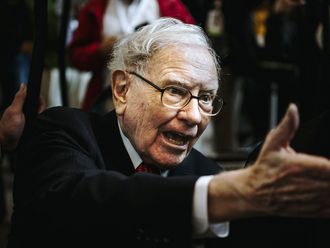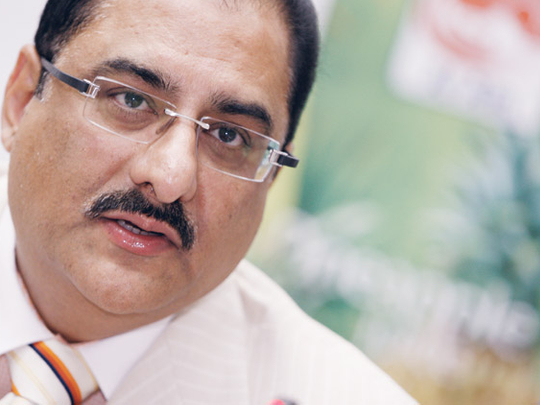
Dubai: The term "cash cow" is not just another catch-phrase to Chief Operating Officer of Al Ain Dairy Shashi Menon — it is literally the business model he is milking. As he describes his company's upcoming six-month plan to increase the size and capacity of the cow and camel farms, he speaks fondly of the animals: Unlike disgruntled humans, cows don't complain or make demands, he jokes. Al Ain Dairy, the UAE's largest dairy company by market share according to the latest AC Nielson market report, saw revenue increase by 20 per cent for milk and 25 per cent for juice in the first quarter of 2010 over the same period last year.
The company is now eyeing the juicier regional export market with the recent launch of the Long Life Tetra Pack Fruit Juice and plans to increase production capacity. Menon expects the nine-month shelf life fruit juice to grab an additional 10 to 15 per cent of the local market.
Shortly after the launch of the new juice, Gulf News caught up with Menon to find out more.
Gulf News: How do you evaluate the performance of the milk and juice market this year?
Shashi Menon: This year it was predicted that the market would grow between six to seven per cent, organic growth. For us we have seen double digit growth so I don't think we have a recession issue.
The whole dairy and juice market is divided into two categories. We have fresh milk and fresh juice and long life milk and long life juice. In the case of milk we find that actually it's about a 60:40 split where fresh milk is the most preferred choice of the customer because they believe it retains its nutritive qualities and it's much better than long life, even though scientifically it's not proved. But we find that fresh milk outsells long life milk. In the case of juice however, it is different because long life juices have got more than 50 per cent market share and fresh juice is much lesser, 40-45 per cent. The reason is that juice is mainly consumed by children and all mothers find it very convenient to send their children to school with a sandwich and fresh juice. With fresh juice you have temperature limitations. If it crosses 40 degrees Celsius than the product becomes unstable and in weather that reaches 45, to 50 degrees in this country it's not a very safe option. Long life juice on the other hand is very stable — normally up to even 25 degrees more — so families and mothers have the comfort of knowing they are giving a safe product to their children.
What is Al Ain Dairy's current market share?
It is currently 38 per cent. Every year progressively we are growing year on year. We have grown about 12 per cent [since last year].
What are the company's expansion plans? Which markets are you planning to go into?
We are definitely looking into two aspects. One is backward integration whereby we are expanding our farms in Al Ain. Work has already started on it. We have started to invest heavily into new infrastructure for expansion of our production lines and our warehousing capabilities. In our forward integration aspect we are investing more in terms of market-facing assets and we are looking now at the Long Life capabilities to enter new markets.
We have currently three farms, they hold 5,000 head of cattle. We are planning to have another addition of 1,200 more animals by next year. We plan to open three more filling lines for milk and juices. In terms of warehouses we are building two more chilled warehouses. This is in the next six months. We are also substantially investing in camel milk facilities. We are planning to have new camels sheds and milking parlours.
In terms of milk production, does Al Ain have its own herd?
We have our own herd, we also do source from local farms. It's something like a 70:30 ratio, 70 is local and 30 is sourced from local farms. There is a continuous breeding programme. We do an A to Z thing. We start with a calf, make it into a big cow, get the cow to milk, get the milk down to the factory, process it into bottles, and we sell it.
Is the technology imported from abroad?
Most of the technology we use is best business practices and they come from international dairy company standards. A lot of dairy industry work has been developed from different countries like Sweden, Denmark, UK, France, and Australia. So we pick and choose from these elements what's best suited to customise our needs here.
Do you have plans to buy land in other countries?
This is something at a brainstorming level, but we have not progressed it further. Strategically speaking it makes a lot of sense for companies in the agro business to secure their supply positions. One of the major ingredients for the dairy industry is grass and afalfa, hay and feed corn. So yes, it would make sense to buy this in areas or countries which are more fertile and more cheaper to operate then secure supply sources.
Which countries?
At this point I cannot disclose anything, it's at the brainstorming level.
Is there a possibility to breed cattle to enter the meat market?
Currently we would like to focus on our core business which is currently manufacture of daily and juice products. We may diversify into cheeses and associated products but it's not part of our policy to move into meat. Firstly, we need to develop a completely new set of skills and a new facility. At this point it's not thought about as the immediate investment sectors. Not for the next 3 to 4 years.
Customer research shows that customers are becoming more health conscious. How do you cater to that segment in your products?
We have tried to minimise (2 to 4 per cent) the use of sugar to the maximum. We have tried to go with a tag saying no sugar added. We are also developing and innovating new product lines like Slim Zero which claims to be having zero calories and we are also working on health or lifestyle products like "morning" or "sabaho" which is muesli plus low-fat yoghurt and fruit.
There's been an outflow of people from the UAE, some have lost their jobs, some don't find it affordable to live here anymore. How has this affected your sales?
There was a slight dip in sales for the first three months but the last two months have been very encouraging, you see that increase. We had a dip of almost 6 per cent.
The company started 25 years ago with 200 cows. How far has it come since then?
We have made substantial progress in developing indigenous farming techniques by customising a breed of cows, it's almost five generations we have not imported a single cow. They were all bred here locally. So these cows have acclimatised to the weather and still give good yield. You should come one day and see the cows, I really like them much more than humans and the people I work with. They don't complain, they don't crib, they don't have mood swings. Couldn't ask for more.
What is your vision for the company in the next few years, where do you see it heading?
We see ourselves being in more product categories and more new markets because currently we are very much a local company and would like to be seen as regional at least in the khaleej, if not beyond.
What regional markets would you expand into?
With the introduction of long-life juice, the whole world is a market for us because these products have a shelf life of nine months and unlike fresh products we don't have limitations on time. I think the whole world is open, it depends on who can afford the prices.
Has there been any interest so far from regional importers?
Yes, Jordan, Syria, some inquiries for Iraq. It's still at a very early stage. Right now we are focusing on our success in the UAE first. We see ourselves having a presence in the lower Gulf markets, I mean Bahrain, Kuwait and Qatar. In the next few years we would like to spread out in these markets. There is a lot of goodwill that our brand shares with a lot of these countries regionally, and it makes more sense to tap into the goodwill that exists than create a brand name all over again in another part of the world.
But the capacity you're running on now is only to satisfy the local market.
This is why we're already putting in new lines next year in order to cater to the existing demand and business for us is a continuous business improvement programme you see it and you innovate and you wait.
Pioneer in UAE
- Al Ain Dairy is the first dairy farm established in the UAE in 1981.
- It began with a herd of 200 cows and has reached 5,000 head today.
- Originally the cows were imported from Australia, but the company now breeds them locally.
- The farm currently produces 210,000 litres of milk and up to 80,000 litres of juice per day
- In 2009 the company met 56 per cent of the UAE's dairy demand, according to a study by the Department of Economic Development.
- In 2009, there were 26 operating cattle farms in the UAE with 15,000 cows producing 167,000 tonnes of fresh milk annually — with local market needs still being covered by imported products.
- Last year Al Ain Dairy reported 18 per cent growth in sales for the first quarter of 2009 compared to the same period in 2008. Gross operating profits grew by 23 per cent
- In 2009 juice sales grew 18.5 per cent over those of 2008.
- Dairy sales figures showed 12.5 per cent growth in the first quarter of 2009 compared to the same 2008 quarter.




